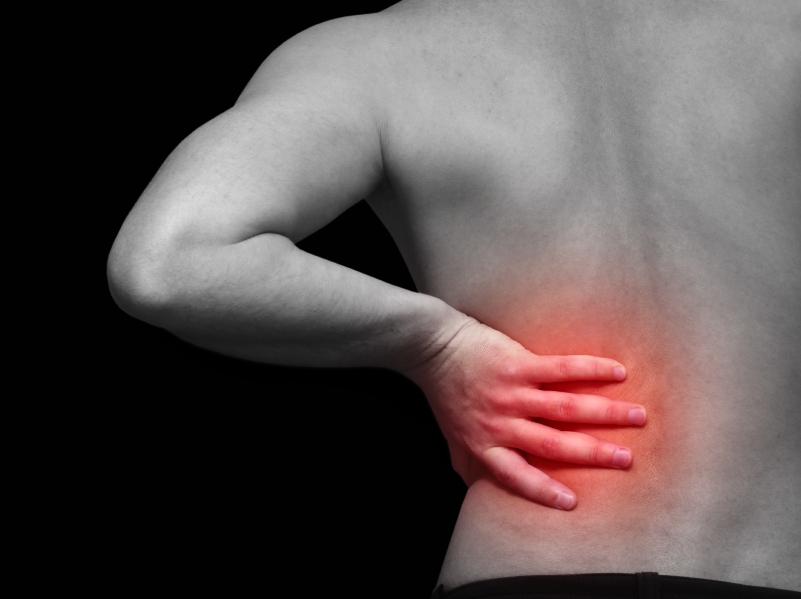Who does lower back pain affect?
Lower back pain is one of the most common forms of mechanical pain that people experience and is a commonly seen condition within the clinic. It is estimated that approximately 1 in 6 Australians suffer from back pain and that 80% of us will experience back pain during some point in our lives.
What causes lower back pain?

Lower Back Pain
There are numerous causes of lower such as sitting for a long period of time, strenuous exercise, lifting heavy objects, pregnancy and stress. It varies amongst each individual and sometimes the exact cause may be unknown.
Low back pain may arise from numerous structures including facet joints, vertebrae, ligaments, muscles and/or discs. It may often involve a combination of these structures.
It is important that a health professional takes a thorough case history and completes an examination to aid in determining what is occurring and to rule out any potential underlying pathology.
What are the symptoms of lower back pain?
- Back pain can range in intensity from a dull, constant ache, to a sudden, sharp, or shooting pain
- Pain that can travel to the buttocks, legs & feet; can include numbness, tingling or pins & needles
- Muscle tightness and/or spasms in the lower back, pelvis & hips
- Pain that worsens after prolonged sitting or standing
- Pain that may feel better when changing positions or moving around
- Difficulty standing up straight, walking or going from sitting to standing
What can Osteopaths do to help?
- Approximately 60% of patients with low back pain report improvement within 7 days with conservative therapy-including Osteopathy treatment.
- Treatment may involve a combination of techniques including; articulation & mobilisation of joints, stretching of tight musculature, dry needling, soft tissue massage or the use of muscle energy techniques in aim to increase overall movement and reduce pain.
- In conjunction with manual therapy, your health practitioner will also give you some gentle stretches and exercises to do at home. Research suggests that staying active and continuing to move your back will aid in recovery. Continuing to stay active within your pain limits assists in preventing more long-term issues with your back.
- Other advice on how to manage back pain may include the use of heat packs and advice on posture.
When is it important to seek immediate medical care?
- Any difficulty controlling your bowel or bladder
- Any numbness in your groin or buttock area
- Intense pain in your back with associated numbness or weakness in your leg/s
- History of trauma to your lower back
It is important to follow up with your health practitioner if your pain isn’t improving or is getting worse.

The Scary Statistics About Back Pain

